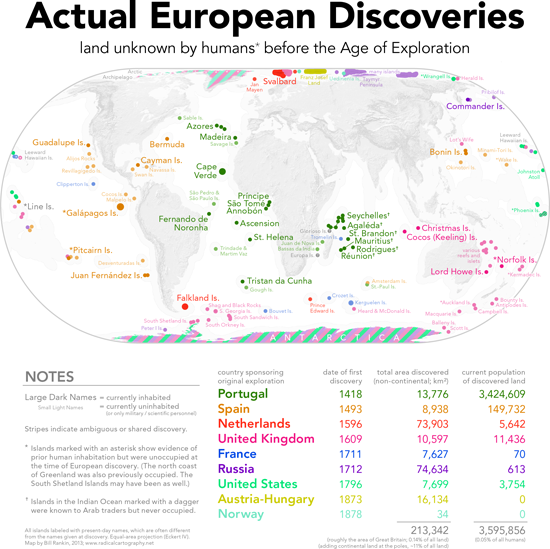
Bill Rankin, 2013
download:
.PNG (2400x2400, 1 MB)
Every Columbus Day, we're reminded of the difference between discovery and "discovery" — and rightly so. But let's not sell Europe short; after all, European explorers found plenty of diminutive islands that no human had ever seen before, along with extravagant amounts of ice and snow. Just the islands alone add up to more than 0.14% of the world's total land area, and today they're home to more people than live in all of Connecticut!
All sarcasm aside, it's worth remembering that almost everywhere Europeans went, they were met by existing inhabitants. Even in the vast Pacific and the barren Arctic, only a few isolated coasts were truly terra nullius. (Indeed, this map particularly underscores the maritime expertise of Pacific Islanders. Unlike the islands of the Atlantic and Indian Oceans, nearly all of the Pacific was settled by the 14th century.)
This map also shows the changing geopolitics of exploration. For example, it shows at a glance how the Treaty of Tordesillas split the 16th-century world between the Portuguese and the Spanish; it also shows the dominance of the British in Australasia and south of the Antarctic Convergence. Contrast this with the seemingly random color patterns in the Arctic, Pacific, and southern Indian Oceans, where aggressive whaling often led to a free-for-all of destructive competition.
